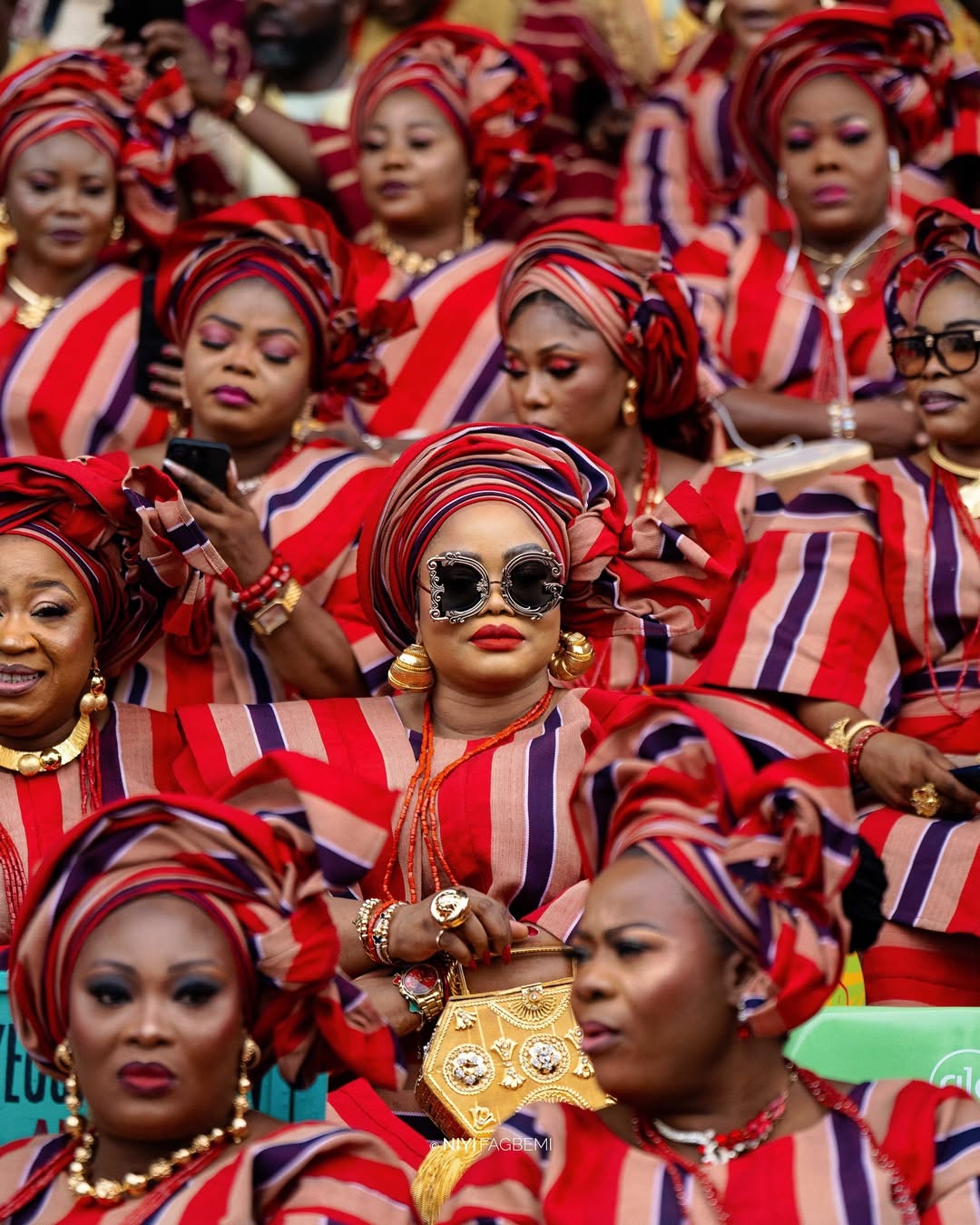
Ojude Oba: A Celebration of Culture, Elegance, and Yoruba Fashion
Share
Every year, just days after the Eid al-Kabir celebration, the ancient town of Ijebu-Ode in Ogun State, Nigeria, comes alive with colour, music, and pride during the iconic Ojude Oba festival. It is more than a cultural event, it is a timeless display of Yoruba heritage, unity, and elegance, especially through traditional attire and fabrics that tell stories across generations.
For Adenike, Ojude Oba was her favorite time of year. As the sun rose on the day of the festival, her family compound was already buzzing. Tailors had worked through the night to deliver freshly sewn outfits, every stitch perfect, every bead in place. This year, her family’s regberegbe (age-grade group) had chosen Alaari Aso-Oke, a luxurious, deep wine coloured fabric known for its thickness, shine, and royal feel.
Adenike’s mother gently helped her tie her iro and buba, wrapping the heavy aso-oke wrapper around her waist with practiced ease. Her gele, stiff and sculptural, was made from fine segó, a modern head tie fabric that added flair to her regal look. Around her neck hung layers of traditional coral beads, a symbol of royalty and respect.
“Ojude Oba is not just about showing up,” her grandmother reminded her. “It’s about showing who you are through what you wear, how you speak, and how you carry yourself.”
As they stepped onto the festival grounds near the Awujale’s palace, the atmosphere was electric. Drummers beat their talking drums with messages only the Yoruba could understand, and horses decorated in embroidered fabrics and beadwork trotted proudly. The men dazzled in agbada made from Sanyan a light but elegant woven silk fabric often reserved for high-status occasions. Their fila caps matched their outfits perfectly, adding to the symmetry and grace of the parade.
Women floated by like queens in colourful Àdìrẹ a hand-dyed fabric made with resist techniques passed down through generations. Others wore lace buba and iro combinations, embroidered with fine thread and paired with bold aso-oke shawls slung over one shoulder.
Each age group took turns to greet the king the Awujale of Ijebuland with dances, chants, and choreographed displays. Adenike’s group performed with pride, each step causing their rich fabrics to shimmer in the sun. Cameras flashed, and the crowd roared with admiration.
For Adenike, wearing her culture wasn’t just about fashion, it was a form of storytelling. Her outfit spoke of ancestry, strength, and elegance. As the day faded into evening, she folded her aso-oke carefully, already dreaming of next year’s design.
Ojude Oba is a living canvas of Yoruba fashion where Aso-Oke, Àdìrẹ, Sanyan, lace, and damask come together in a spectacular expression of identity. It’s a reminder that in the heart of Ijebu-Ode, tradition is not just preserved it is proudly worn.
